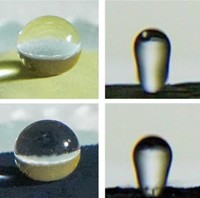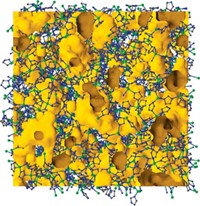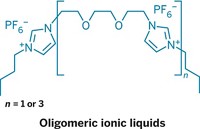Advertisement
Grab your lab coat. Let's get started
Welcome!
Welcome!
Create an account below to get 6 C&EN articles per month, receive newsletters and more - all free.
It seems this is your first time logging in online. Please enter the following information to continue.
As an ACS member you automatically get access to this site. All we need is few more details to create your reading experience.
Not you? Sign in with a different account.
Not you? Sign in with a different account.
ERROR 1
ERROR 1
ERROR 2
ERROR 2
ERROR 2
ERROR 2
ERROR 2
Password and Confirm password must match.
If you have an ACS member number, please enter it here so we can link this account to your membership. (optional)
ERROR 2
ACS values your privacy. By submitting your information, you are gaining access to C&EN and subscribing to our weekly newsletter. We use the information you provide to make your reading experience better, and we will never sell your data to third party members.
Materials
How To Dissolve Your Carbon Nanotubes
May 5, 2008
| A version of this story appeared in
Volume 86, Issue 18
Although carbon nanotubes are generally regarded as insoluble in all solvents, a research team led by Jonathan N. Coleman of Trinity College Dublin and James P. Hamilton of the University of Wisconsin, Platteville, has found that carbon nanotubes actually can be dissolved in N-methylpyrrolidone (NMP) and other solvents with a surface energy that matches that of graphitic surfaces (Adv. Mater., DOI: 10.1002/adma.200702451). The investigation may eventually enable researchers to process carbon nanotubes conveniently via ink-jet printing and other procedures suitable for soluble polymers. Because of carbon nanotubes' extreme insolubility, they are typically chemically modified to enable their dispersion in various liquids, including NMP. On the basis of spectroscopy and scanning-probe measurements, the team finds that nanotube bundles in NMP spontaneously exfoliate (unpeel) upon dilution and that NMP molecules adsorb (shown on top) and desorb (bottom) reversibly to the nanotubes—a key step toward dissolution. The scientists also find that the nanotube-NMP interaction is characterized by a negative enthalpy of mixing, which indicates "solubility in the classical thermodynamic sense, like sugar in water or polystyrene in acetone," Hamilton says.





Join the conversation
Contact the reporter
Submit a Letter to the Editor for publication
Engage with us on Twitter